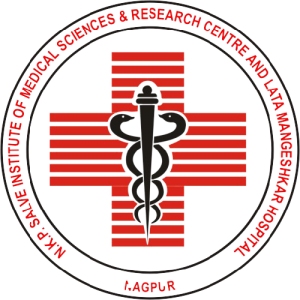- Visibility 110 Views
- Downloads 63 Downloads
- Permissions
- DOI 10.18231/pjms.v.15.i.2.409-413
-
CrossMark
- Citation
A study to explore the perception of cadaveric oath taking ceremony in medical students of West Bengal
Background: “Cadaver is our first teacher” is most probably the first line that every medical student hears when they enter the dissection hall for the very first time. Every medical practitioner is indebted to these great souls who donated their body posthumously and to their families. From the year 2016 cadaveric oath taking ceremony was started in our country. In this ceremony 1st year MBBS students take a pledge or oath before touching the cadaver in anatomy dissection hall. The oath marks a formal commitment that underscores the importance of respect and professionalism while working with cadaver.
Aims and Objective: This study was conducted to assess the impact of that cadaveric oath taking ceremony among students.
Materials and Methods: The study was conducted in the department of anatomy in Murshidabad Medical College, Murshidabad, West Bengal. After taking Institutional ethical clearance a Google questionnaire was formed and validated. 125 students were requested to go through that questionnaire before and after the cadaveric oath taking ceremony. Students’ responses were recorded and analyzed.
Result: It has been noticed that, where before cadaveric oath taking 2.4% students were thinking that the ceremony might not be necessary, after oath taking 100% students responded it was necessary. In this study students’ responses were linked to the five-point Likert Scale, a type of psychometric response scale in which responders specify their level of agreement to a statement typically in five points: (1) Strongly disagree, (2) Disagree, (3) Neither agree nor disagree, (4) Agree and (5) Strongly agree. In every question the percentage of students who strongly agreed before ceremony was increased after taking oath. Hence it can be declared that this cadaveric oath taking must influence the students’ mind.
Conclusion: The objectives of the study was checked with the result and a positive influence was observed correlating with the cadaveric oath taking ceremony.
References
- Rath G, Garg K. Inception of cadaver dissection and its relevance in present day scenario of medical education. J Indian Med Assoc. 2006;104(6):331–3.
- Sawant SP, Tasnim SS, De AS. The cadaveric oath - an important bioethical perspective in anatomy. Natl J Clin Anat. 2015;4(4):210–
- Garg A. Cadaveric oath. Dadhichi Deh Dan Samity E J. 2019;30.
- Lala M. Cadaveric oath and its relevance in anatomy. Int J Adv Case Rep. 2016;3(6):282–5.
- Narasipuram A. Impact of cadaveric oath on first MBBS students. Int J Adv Res. 2022;10(8):733–5.
- Gaikwad M. R. - Cadaveric Oath: The need of the hour. Indian J Anat Surg Head Neck Brain. 2017;3(2):56–7.
- Dinesh KV, Jayagandhi S, Nim VK, Phansalkar M, Alexander T. Cadaver ceremonies as a foundation step for bioethics: A phenomenological study. Int J Anat Res. 2017;5(3.2):4195–3.
- Keche HA, Thute PP, Gajbe UL, Keche AS, Fulmali DG. Cadaveric oath –perceptions of first year medical students. J Evolution Med Dent Sci. 2020;9(37):2722–5.
- Lin SC, Hsu J, Fan V. Silent virtuous teachers: Anatomical dissection in Taiwan. BMJ. 2009;339:b5001.
- Dissabandara LO, Nirthanan SN, Khoo TK, Tedman R. Role of cadaveric dissections in modern medical curricula: a study on student perceptions. Anat Cell Biol. 2015;48(3):205–12.
- Saha N, Moirangthem MS. Attitude of first year medical students in dissection hall. J Anat Soc India. 2015;64:S13.
- Lalit M, Piplani S, Mahajan A, Arora AK. Attitude and Response of First-Year Medical Students Toward Cadaver, Dissection, and Subject of Anatomy: A Qualitative Study. AMEI’s Curr Trends Diagn Treat. 2018;2(2):121–9.
- Souza DA, Kotian SR, Pandey AK, Rao P, Kalthur SG. Cadaver as a first teacher: A module to learn the ethics and values of cadaveric dissection. J Taibah Univ Med Sci. 2020;15(2):94-101
- Guo K, Luo T, Zhou LH, Xu D, Zhong G, Wang H et al. Cultivation of humanistic values in medical education through anatomy pedagogy and gratitude ceremony for body donors. BMC Med Educ. 2020;20(1):440.
- Sv S, Maria FY, Karunakaran B, Raghunath G, Kumaresan M, Zareena Begum, et al. Donor Oath: Respect to the Mortal Teacher to Learn Ethics and Humanitarian Values of Anatomy. Cureus. 2022;14(3):e22941.
- Singh P, Phuyal N, Khadka S, Thapa TP, Thakur SK. Perception of First-Year Medical Students Towards Cadaveric Oath. J Nepal Health Res Counc. 2023;21(2):249–53.
How to Cite This Article
Vancouver
Saha S, Chakraborty S, Halder S, Sengupta O, Jana TK, Agarwal S. A study to explore the perception of cadaveric oath taking ceremony in medical students of West Bengal [Internet]. Panacea J Med Sci. 2025 [cited 2025 Oct 27];15(2):409-413. Available from: https://doi.org/10.18231/pjms.v.15.i.2.409-413
APA
Saha, S., Chakraborty, S., Halder, S., Sengupta, O., Jana, T. K., Agarwal, S. (2025). A study to explore the perception of cadaveric oath taking ceremony in medical students of West Bengal. Panacea J Med Sci, 15(2), 409-413. https://doi.org/10.18231/pjms.v.15.i.2.409-413
MLA
Saha, Satyajit, Chakraborty, Sarmistha, Halder, Subhajit, Sengupta, Oyndrila, Jana, Tapan Kumar, Agarwal, Suchi. "A study to explore the perception of cadaveric oath taking ceremony in medical students of West Bengal." Panacea J Med Sci, vol. 15, no. 2, 2025, pp. 409-413. https://doi.org/10.18231/pjms.v.15.i.2.409-413
Chicago
Saha, S., Chakraborty, S., Halder, S., Sengupta, O., Jana, T. K., Agarwal, S.. "A study to explore the perception of cadaveric oath taking ceremony in medical students of West Bengal." Panacea J Med Sci 15, no. 2 (2025): 409-413. https://doi.org/10.18231/pjms.v.15.i.2.409-413
